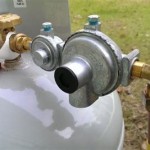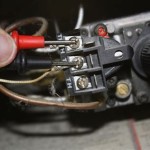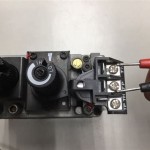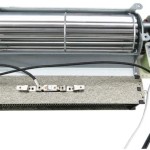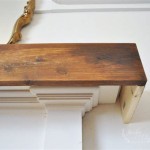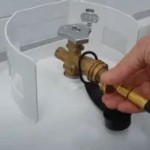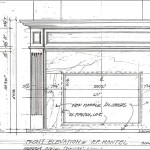Corner Fireplace Gas Direct Vent: A Comprehensive Guide
A corner fireplace offers a unique architectural and design element to a home. Utilizing a gas direct vent system for a corner fireplace provides a combination of aesthetics, efficiency, and ease of use. This article explores the intricacies of corner fireplace gas direct vent systems, covering their components, installation considerations, venting requirements, safety features, and maintenance aspects.
Corner fireplaces challenge traditional fireplace placements, often becoming a focal point in a room due to their unconventional location. Gas direct vent systems make these installations possible by offering increased flexibility in venting and installation options compared to traditional wood-burning fireplaces. Direct vent systems draw combustion air from outside the home and exhaust combustion byproducts directly outside through a sealed venting system. This eliminates the need for a conventional chimney and minimizes heat loss.
The ability to vent horizontally through an exterior wall makes corner fireplaces with gas direct vent systems a practical solution for homes without chimneys or for renovations where adding a chimney is costly or impractical. They offer a readily available source of heat that can be activated with the flip of a switch or the press of a button, providing both convenience and comfort. Furthermore, they come in a variety of styles and finishes, allowing homeowners to choose a unit that complements their interior design.
Key Components of a Corner Fireplace Gas Direct Vent System
Understanding the key components is essential to appreciating the functionality and performance of a corner fireplace gas direct vent system. These components work together to ensure safe, efficient, and reliable operation.
Firebox: The firebox is the central housing that contains the gas burner and ceramic logs or glass media. It is designed to withstand high temperatures and provide a realistic flame appearance. In corner models, the firebox is usually angled to fit neatly into the corner space. The firebox material is typically made of heavy-duty steel or cast iron, coated with a heat-resistant paint or enamel finish.
Gas Burner: The gas burner is the component responsible for mixing gas and air to create the flame. It's engineered to provide a consistent and visually appealing flame pattern. Gas burners are typically made of stainless steel or other corrosion-resistant materials. They vary in size and BTU output, depending on the desired heat output of the fireplace. The burner also contains safety controls, such as a thermocouple or flame sensor, which shuts off the gas supply if the flame is extinguished.
Ceramic Logs or Glass Media: These add realism to the fireplace. Ceramic logs are meticulously designed to resemble natural wood, complete with intricate details and textures. Glass media options, like reflective glass beads or fire glass, offer a more modern and contemporary aesthetic. The choice of logs or media affects the overall visual appeal of the fireplace and how the heat is radiated into the room.
Direct Vent System: This consists of two concentric pipes: one for intake air and one for exhaust. The outer pipe draws fresh air from outside the home, while the inner pipe vents combustion gases outside. This sealed system ensures that no indoor air is used for combustion, and no exhaust gases enter the living space. Direct vent systems are available in various lengths and configurations, allowing for installation flexibility. The venting system must be certified and compatible with the specific fireplace model.
Control System: This includes a gas valve, ignition system, and thermostat. The gas valve regulates the flow of gas to the burner. The ignition system, which can be a pilot light, electronic ignition, or intermittent pilot ignition (IPI), starts the flame. The thermostat allows for temperature control, allowing the user to set a desired room temperature. Some models also include a remote control for convenient operation.
Safety Features: Gas direct vent fireplaces have multiple safety features. These include a flame sensor that shuts off the gas if the flame is extinguished, preventing gas leaks. Many units also have a pressure regulator to maintain consistent gas pressure, and a safety screen or glass panel to prevent accidental contact with the flame. Furthermore, direct vent systems minimize the risk of carbon monoxide poisoning by exhausting combustion gases directly outside.
Installation Considerations for Corner Gas Direct Vent Fireplaces
Proper installation is critical for ensuring the safe and efficient operation of a corner fireplace gas direct vent system. Several factors must be considered to ensure a successful installation. A qualified professional should always be consulted for installation to guarantee adherence to local codes and manufacturer recommendations.
Location: Choosing the right corner for the fireplace is the first step. The location should be easily accessible for gas line connections and venting. It is also important to consider the proximity to electrical outlets for the control system and optional features like a blower fan. The selected corner should also provide adequate clearances from combustible materials, as specified by the manufacturer.
Gas Line Connection: A licensed gas fitter must connect the fireplace to the gas supply. The gas line must be properly sized to provide adequate gas pressure to the burner. A shut-off valve should be installed upstream of the fireplace for maintenance and safety purposes. The gas line connection must be tested for leaks after installation.
Venting: The direct vent system must be installed according to the manufacturer's specifications. The venting system must be properly sealed to prevent leaks and ensure proper exhaust. The venting system must also terminate outside the home in a location that meets code requirements. This typically involves maintaining minimum clearances from windows, doors, and air intakes.
Framing and Finishing: The corner fireplace requires proper framing to support its weight and provide a secure enclosure. The framing should be constructed from non-combustible materials, such as metal studs or concrete board. The finishing around the fireplace should also be done with non-combustible materials, such as stone, brick, or tile. Combustible materials, such as wood paneling or wallpaper, should be kept away from the fireplace according to manufacturer guidelines.
Electrical Connections: If the fireplace has electrical components, such as a blower fan or electronic ignition, it must be connected to a dedicated electrical circuit. The electrical connections must be made by a qualified electrician and must comply with local electrical codes. A ground fault circuit interrupter (GFCI) outlet should be used to protect against electrical shock.
Clearances: Maintaining proper clearances from combustible materials is crucial for preventing fires. The manufacturer's instructions will detail the minimum clearances required around the fireplace. These clearances must be strictly adhered to during installation. This includes clearances from walls, ceilings, and flooring.
Maintaining and Inspecting a Corner Gas Direct Vent Fireplace
Regular maintenance and inspection are crucial for ensuring the safe and optimal performance of a corner fireplace gas direct vent system. Proper maintenance will extend the life of the unit and prevent potential hazards.
Annual Professional Inspection: It is recommended to have the fireplace inspected annually by a qualified technician. The technician will inspect the gas line, burner, venting system, and control system for any signs of damage or wear. They will also clean the burner and venting system to ensure proper airflow and combustion. A professional inspection can identify potential problems before they become serious, saving you money and preventing potential hazards.
Cleaning: Regularly clean the glass panel or safety screen to remove dust and soot. Use a non-abrasive cleaner specifically designed for fireplace glass. Clean the ceramic logs or glass media with a soft brush to remove dust. Avoid using household cleaners, as they can damage the surface or release harmful chemicals when heated.
Vent Inspection: Periodically inspect the venting system for any signs of damage or blockage. Ensure that the vent termination is clear of debris, such as leaves or snow. If you notice any signs of damage, such as rust or corrosion, contact a qualified technician for repair.
Pilot Light: If your fireplace has a pilot light, check it regularly to ensure that it is burning properly. A weak or flickering pilot light may indicate a problem with the gas supply or the burner. If you are unfamiliar with how to relight the pilot light, consult the manufacturer's instructions or contact a qualified technician.
Gas Leak Detection: Regularly check for gas leaks. You can use a commercially available gas leak detector or mix a solution of soap and water and apply it to gas line connections. If you suspect a gas leak, immediately turn off the gas supply and contact your gas company or a qualified technician.
Carbon Monoxide Detector: Install a carbon monoxide detector near the fireplace and test it regularly. Carbon monoxide is a colorless and odorless gas that can be deadly. A carbon monoxide detector will alert you to the presence of dangerous levels of carbon monoxide in your home.

Corner Series Direct Vent Gas Fireplace By Majestic S Fireplaces

Napoleon Ascent 36 Direct Vent Gas Fireplace Model B36

Superior Corner Complete Gas Log 40 Direct Vent Fireplace Drt40cl Cr Drt4000 Multi View Series
Corner Gas Fireplaces Heatilator

Vantage Hearth Direct Vent Gas Corner Fireplace

Direct Vent Gas Fireplaces Fireplacepro

Pin On Home Decorating

Heatilator Corner Direct Vent Gas Fireplace 36 By

Tahoe Deluxe 32 Direct Vent Gas Fireplace Remote Ready With Hearth And Corner Surround By Ventless Logs Com Specializing In Fireplaces

Lx2 3 Sided Corner Gas Fireplace Natural The Center
Related Posts

